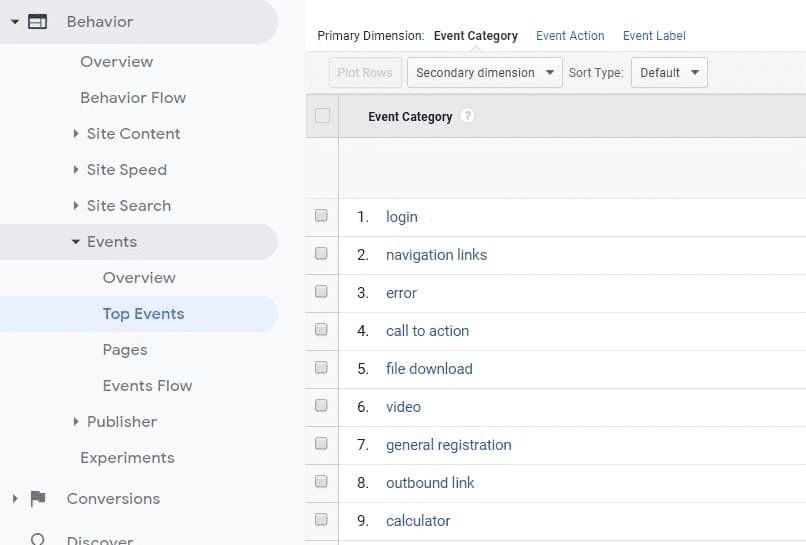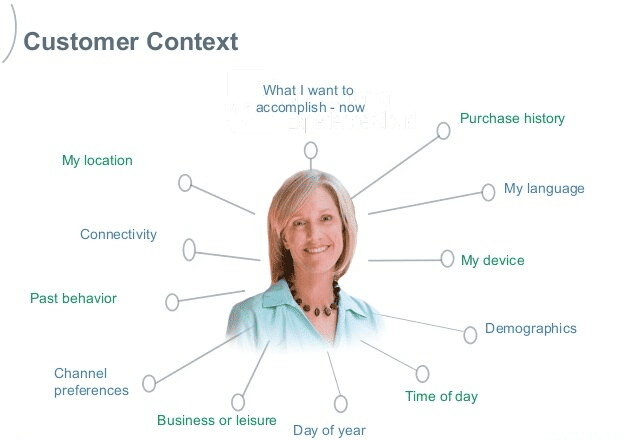How to Increase Ecommerce Conversion Rates with Signals
Signals are powerful indicators of what customers want. Here's how brands can use signals with machine learning models to improve conversion.

What are Signals?
In the context of customer experience, we define a signal as a message about an event and its underlying context. For example, a view or click, a search or filter, a purchase, a support ticket creation, a bounce or abandonment, an email open – all of these are common events that can generate signals. Common examples of signal context would include device specific fingerprint info (diagram below), location, as well as derived context information such as weather and season. Signals are in use by most of today’s modern Customer Data Platforms (CDPs), Product Intelligence Platforms, and Analytic packages. It is possible to use the same sources or source your signals directly from these platforms.
| The events tab in Google Analytics shows example signals arising from a website. Most packages today including Google Analytics support integration of signal data. Tag Managers such as Google Tag Manager, Tealium, and Adobe Tag Manager also provide an API for bi-directional integration of signal data. |  |
Signals can be based on direct or indirect events throughout a customer journey. In customer interactions, we classify signals as explicit, implicit, and systematic.
Implicit is indirect, but explicit is direct.
Signals arise from all touchpoints whether online or offline, but also can be externally sourced. Signals should be indicated as positive or negative. Common examples of explicit signals include purchases, ratings, social posts, searches, and returns (negative). Explicit signals generally require some effort on the part of the end user. In contrast, implicit signals are automatically sent without any effort on part of the user and can also be inference based.
| Examples include a user’s visit, clickstream behavior, email opens, query intent, or bounce (negative). Systematic signals are those not generated by a human such as an analytic engine. Examples include events originating out of an ERP, Order Management System, Ticketing / CRM system, created business rules, or synthesized from a BI/Analytic platform. |  |
Why Are Signals Important?
Listening to users is a fundamental reason behind the success of most businesses. Through their interactions and behaviors users are essentially telling you what is important to them. Incorporating signals into machine learning models can make your interactions “smarter”. Smarter interactions enhance the customer experience therefore driving KPIs such as revenue per session.
Signals also help reveal what is leading to your business outcomes whether positive or negative which drives more effective data driven strategies such as through analytics and insights. Today’s machine learning advancements give the ability to process and analyze immense amounts of signal data to power real-time outcomes. The focus of this blog is around the application and activation of signals across your enterprise to drive better results.
Identifying and Collecting Signal Data
Most digital native platforms and touchpoints today already collect or provide an interface to harness interaction signal data. Generally digital signals can be instrumented and acquired through a tag manager, tracking pixel or beacon script, enterprise transaction, event logs, Point-of-Sale systems, and analytic platforms. All systems that have any data that is exposed to a customer should be considered for signals both online and offline. It is important to identify a key that will allow the connection of signal data across multiple sources. A common one is a customer token such as a customer ID.
For ecommerce and retail signals that surround the customer, the product, the order, the touchpoint, and so on should be collected. Specifically in omnichannel commerce, common signals would include views, gestures, clicks, abandonments, purchases (online and offline touchpoints), and a whole host of other user surveillance data made readily available in modern day web frameworks such as React or PWA.
 |
|
Customer self-service would build on those signals used for commerce, including those generated through ticketing, chat, and knowledge record interactions. Marketing would leverage signals generated from campaign interactions, leads, marketing analytics and customer data.
 |
|
Enterprise applications would include signals that surround business processes such as work and process flows, transactions, financial records, employee/hr records, and supply chain records.
 |
|
Signals and Context
Key to include is signal metadata such as context. This meta-data provides the insight around the signal to support more precise interactions and target specific outcomes. For example signal meta-data around the customer would include:
 |
|
Applications of Signal Data

Pairing of signal data against business records and associated KPI’s is where the magic happens. For example correlating signals with products and KPI’s will reveal what about the product such as features and attributes are impacting a specific KPI such as conversion. Further correlating this result with behavioral signals we are able to uncover what specific behaviors over which product features are impacting KPI’s.

An end result could be an affinity matrix to be used for personalization.
The ecommerce use case below shows some practical ML based automated hyper personalized use cases using an affinity matrix generated through signals.
 |
A personalized apparel retailer home page based on the individual user’s signals can include tailored versions of the following:
|
- Signal driven experience drives relevancy, discoverability, and findability all contributing to CVR
- Contextual & personalized experiences drive Conversion / Revenue / Visit
Using Signals in Internal Applications
Signals can also be used to surface the right information at the right time, helping your employees do their jobs more effectively.
- Signals drive relevance and rank of results across enterprise wide sources
- Personalization based on signals improves relevance at user and user role


There can be a wealth of important data arising from your internal applications such as those where employees interact with customers. For example the decisions an employee makes on behalf of a customer, a resolution, an answer, all can contribute to the overall intelligence behind your subsequent interactions.
In Summary
There is not a one size fits all approach to signals. Signals that are essential to a certain business may not be to another. For example, custom-made apparel products are often non-returnable and so returns aren’t very useful as a signal. But to a manufacturer, it’s important to know if a certain part is being returned frequently – a sign that the part’s description may be insufficient or inaccurate.
Because signals are unique to each customer and each business, identifying the right set of signals will be key to enabling AI to unlock an individual customer’s behavior and deliver real-time personalization at scale. Don’t overlook your historical signal data. You can use historically available clickstream data – the raw signals about customers – as training data to help AI understand customer intent from day one.
Signals are powerful indicators of your customer behavior, allowing you to not only deliver what customers want but also predict what they need next. Supported by machine learning algorithms, signals can enable your business to create a natural, seamless omnichannel experience, from merchandising to product discovery to customer service.
Learn how Lucidworks has helped brands capture and leverage signals to enhance the customer journey, contact us.
Best of the Month. Straight to Your Inbox!
Dive into the best content with our monthly Roundup Newsletter!
Each month, we handpick the top stories, insights, and updates to keep you in the know.